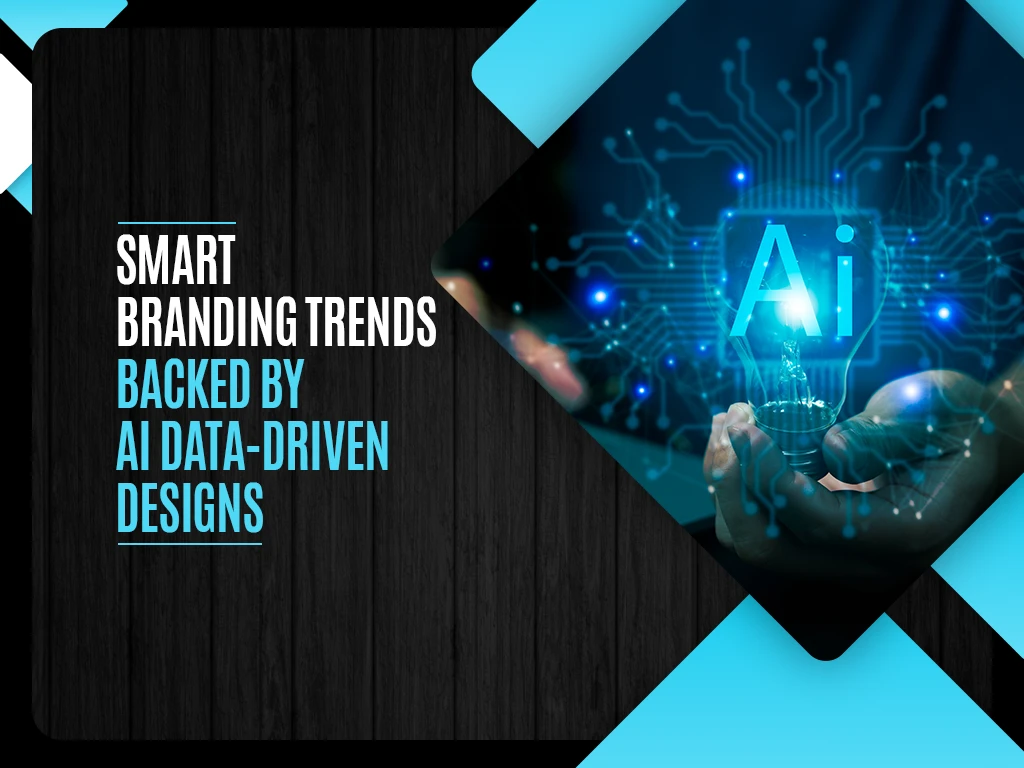Smart branding trends backed by AI Data-driven designs

Consumers are savvier, and traditional marketing tactics are losing their luster. In this data-driven age, brands need to be smarter, more dynamic, and more in tune with their audience than ever before. This is where data-driven design comes in.
What is data-driven design?
Data-driven design is the process of using data to inform and optimize every aspect of the branding process, from logo design and brand messaging to website layout and customer experience. By leveraging data insights, brands can create more targeted, relevant, and impactful experiences that resonate with their audience on a deeper level.
Fueled by AI’s analytical firepower, data-driven design evolves from static snapshots to a dynamic dance with your audience, anticipating their needs and building an ever-evolving brand persona that resonates in real-time.
How is AI shaping smart branding trends?
Artificial intelligence (AI) is playing a pivotal role in the rise of data-driven design. AI-powered tools are helping brands to:
Analyze customer data:
AI can sift through vast amounts of customer data, such as website clicks, social media interactions, and purchase history, to identify patterns and trends. Branding architects leverage data to choose ideal colors, fonts.
Personalize the customer experience:
AI can be used to personalize the branding experience for each individual customer. For example, an AI-powered chatbot can greet website visitors by name and recommend products based on their past browsing behavior.
Create dynamic content:
AI can be used to generate dynamic content, such as images and videos, that can be tailored to specific audiences and contexts. This can help brands to keep their content fresh and engaging.
Optimize marketing campaigns:
AI can be used to optimize marketing campaigns by identifying the most effective channels and messages for reaching target audiences. This can help brands to save money and improve their Return On Investment (ROI).
Here are some examples of how AI is being used in data-driven design:
Nike: Nike uses AI to personalize its website and app experiences for each customer. The AI takes into account factors such as the customer’s location, past purchases, and browsing behavior to recommend products and suggest workouts.
Coca-Cola: Coca-Cola uses AI to generate personalized marketing campaigns for different regions and demographics. The AI analyzes data such as social media trends and local news to create targeted content that resonates with each audience.
Netflix: Netflix uses AI to personalize its recommendations for each user. The AI takes into account factors such as the user’s watch history, genre preferences, and even the time of day to suggest new shows and movies.
From sneakers to sodas to streaming nights, these examples show how AI isn’t just shaping smart branding trends. It’s becoming the secret ingredient for brands. That want to truly connect with their customers, one personalized experience at a time.
The benefits of data-driven design for smart branding trends
There are many benefits to using data-driven design for smart branding trend strategy. Some of the most notable benefits include:
Increased brand relevance: By using data to understand your audience, you can create branding that is more relevant and meaningful to them. This can lead to increased brand loyalty and advocacy.
Improved customer experience: Data-driven design can help you create a more personalized and engaging customer experience. This can lead to increased customer satisfaction and loyalty.
Higher ROI: By using data to optimize your marketing campaigns, you can improve your ROI and get more bang for your buck.
Reduced risk: Data-driven design can help you to reduce the risk of making bad decisions about your branding. By relying on data instead of intuition, you can be sure that your decisions are based on sound evidence.
Getting started with data-driven design
If you’re interested in getting started with data-driven design for smart branding trends, there are a few things you can do:
Start collecting data:
The first step is to start collecting data about your customers. This can include data from your website, social media channels, and email marketing campaigns.
Invest in the right tools:
There are a number of AI-powered tools available that can help you to analyze your data and create data-driven designs.
Hire a data-driven designer:
If you don’t have the time or expertise to do it yourself, you can hire a data-driven designer to help you implement your data-driven branding strategy.
With the right data in hand, intelligent tools to guide you, and a trusted expert by your side. You can navigate the ever-shifting landscape of smart branding trends and build a brand. That truly connects with your audience in today’s data-driven world.
Conclusion
Data-driven design is the future of smart branding trends. By using data to inform your branding decisions, you can create more relevant, meaningful, and impactful experiences for your customers. This will lead to increased brand loyalty, customer satisfaction, and ROI. So, what are you waiting for? Start using data to drive your smart branding trend today!

